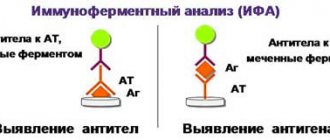Knowing the time it takes for the stomach to digest food is important for those who want to live a long time. A person who, when eating, does not take into account the time of digestion of food, carries kilograms of rotting food.
In order to take into account which product spends how long in the stomach, you must first, in principle, understand that products that are different in structure and composition require different amounts of time to be digested by the stomach. Until a certain moment, I myself did not think about this question, although I had an intuitive idea about it. Many people who love to eat well “throw a variety of foods into the fire” indiscriminately, and then drink mezim and other nonsense because the stomach stops, and are still surprised at this.
Let's go in order.
VEGETABLES
- Vegetable and fruit salads take 20 to 30 minutes to digest;
- Raw vegetable salads, such as Boston, garden, red or romaine, as well as juicy vegetables like bell peppers, cucumbers and celery, spend 30 to 40 minutes in the stomach;
- In combination with vegetable oil, such salads and vegetables will spend at least 1 hour in the stomach;
- Steamed, boiled or stewed vegetables take about 40 minutes to digest;
- Leafy ones, such as kale, spinach and endive, also 40 minutes;
- Pumpkin, green beans, zucchini, broccoli and cauliflower are in the stomach for about 45 minutes;
- Root vegetables such as carrots, beets, turnips, parsnips and turnips – from 50 minutes.
By the way, vegetables, fruits and other foods that can be eaten raw are better eaten raw, despite the fact that they will be digested somewhat slower raw than those processed at high temperatures.
Why raw?
The fact is that the time for digesting food that has undergone heat treatment is reduced due to the fact that the amount of substances useful to our body in it is reduced, and as a result, the time for their absorption in the gastrointestinal tract.
However, it is worth remembering that raw foods that are poorly washed or have not been put through high temperatures can be carriers of worm eggs (which are already difficult to get rid of, and even more difficult to protect yourself from) and many other pathogenic organisms.
Digestion time of food in the stomach (Table)
In order to eat properly and keep your body healthy, it is important to know how long it takes to digest a particular product in the human stomach, as well as what affects the digestion time of products, the table below will help with this.
Factors influencing the time of digestion of food in the stomach:
— Method of cooking (cooking, frying, or raw food);
— Food temperature;
- On the state of health and constitution of the human body.
- Time of meal (digestion is fastest at lunch, and slowest in the morning and evening);
- Mixing food with each other (one of the most important factors).
All products or food can be divided into groups according to the time of digestion in the stomach.
| Product groups | Digestion time in the stomach | Products, food |
| 1st product group This includes mainly various carbohydrates | no more than 45 minutes | Fruits and berries (watermelon, melon, orange, grapefruit, grapes, apple, peach, pear, cherry, sweet cherry), raw vegetables, broths and mixed salads with fruits, fruit and vegetable juices. |
| 2nd group of products These are protein foods with a small amount of fat | no more than 2 hours | Chicken, egg, lean fish, fattier fish (salmon, trout, herring) |
| 3rd product group these are foods that contain complex carbohydrates and starch | about 2-3 hours | Potatoes, all cereals, whole milk cottage cheese, seeds (sunflower, pumpkin, sesame), nuts, legumes |
| 4th product group Most foods and foods are eliminated from the body undigested | more than 3-5 hours | Coffee and tea with milk, canned fish, meat and various stews, pates, hard cheese made from whole milk, pasta made from durum wheat. |
Table of the digestion time of food and products in the human stomach
| Food | Digestion time in the stomach |
| Water | Instantly enters the intestines (if the stomach is empty) |
| Fruit juice | 15-20 minutes |
| Vegetable juice | 15-20 minutes |
| Vegetable broth | 15-20 minutes |
| Yogurt | 2 hours |
| Full fat kefir | 2 hours |
| Low-fat kefir | 1.4 hours |
| Raw vegetables | 30-40 minutes |
| Vegetable salads without oil | 30-40 minutes |
| Vegetable salads with vegetable oil | up to 1 hour |
| Fruits containing a lot of water and berries | 20 minutes |
| Watermelon melon | 20 minutes |
| Orange, tangerines, grapes, grapefruit | 30 minutes |
| Apples, cherries, peaches, pears | 40 minutes |
| Banana | 45 minutes |
| Boiled vegetables | 40 minutes |
| Cabbage, zucchini, corn | 45 minutes |
| Root vegetables (turnips, carrots, beets, radishes, radishes) | 50 minutes |
| Potatoes, Jerusalem artichoke (vegetables with starch) | 1.5-2 hours |
| Porridge: buckwheat, rice, millet | 2 hours |
| Legumes (beans, peas, beans) | 2 hours |
| Nuts (almonds, peanuts, pecans) | 2-3 hours |
| Sunflower seeds, pumpkin seeds, sesame seeds | 3 hours |
| Cottage cheese | 2 hours |
| Hard cheese | 3-4.5 hours |
| Smoked sausage cheese | 3.4 hours |
| Ice cream | 2.3 hours |
| Egg raw | 45 minutes |
| Soft-boiled egg | 1,5 hour |
| The egg is cool | 2 hours |
| Fish | 1 hour |
| Sea kale | 2 hours |
| Shrimp (krill meat) | 2.3 hours |
| Mussels | 3 hours |
| Canned fish | 3-3.5 hours |
| Poultry meat | 2.5-3.3 hours |
| Rabbit meat | 3.1 hours |
| Beef meat | 3.3 hours |
| Lamb meat | 3.3 hours |
| Pork | 3-5 hours |
| Pork lard | 5.5-6 hours |
| Boiled sausage Doctorskaya | 3 hours |
| Semi-smoked sausage | 4 hours |
| Raw smoked sausage | 4.2 hours |
| Milk sausages (sausages, bacon) | 3 hours |
| Meat or liver pate | 3 hours |
| Dumplings (meat, chicken) | 3.3 hours |
| Butter | 3.2 hours |
| Mayonnaise | 3.2 hours |
| Alcohol (beer, wine, vodka, cognac, whiskey, liqueur) | 1.3 hours |
| Chocolate without additives | 2-2.2 hours |
| Halva | 3 hours |
| Candies | 2-2.5 hours |
| Marshmallow, marmalade | 120 minutes |
| Natural honey | 1.2 hours |
| Cookies, gingerbread, bagels | 2.2-2.4 hours |
| Cakes, pastries | 3-4 hours |
| Bread made from wheat or rye flour | 3.1-3.3 hours |
ANIMAL PROTEIN
- Chicken egg (with yolk) 45 minutes;
- Fish like cod and burbot are digested in just 30 minutes;
- But herring, salmon, trout and fattier species ranging from 50 minutes to 1-1.5 hours;
- Skinless chicken requires 1 to 2 hours, depending on cooking method;
- Turkey meat without skin for about 2 hours;
- Lamb, as well as beef from 3 to 4 hours;
- But the pork will remain in the stomach for 4 to 5 hours.
Why is all this necessary? For example, it is useful to know how long it takes for the stomach to digest food in the context of drinking liquids. After all, it is obvious that when a person drinks water, tea, or something else immediately after eating, he dilutes the gastric juice with this liquid. As a result, digestion of food becomes more difficult and the load on the gastrointestinal tract increases. Read more about this here.
And by combining foods that require different digestion times during one meal, you expose your stomach to additional stress . The stomach, which contained potatoes and pork, could send the digested potatoes into the intestines within an hour. But I have to keep it there. Keep for as long as it takes to digest the meat. And even how well you chewed it affects the digestion of meat. If you look at the product compatibility tables, you will be surprised to find many similarities between this article and what is stated in them.
How to choose the right diaper for absorbency
One of the main reasons for absorbent linen to leak is a product that is incorrectly selected for absorbency. Sometimes people buy diapers (or “diapers”, as they are also mistakenly called) with maximum absorbency, hoping to solve the problem: as they say, a lot is not a little. But this approach is not always justified: both from the point of view of increased costs (the more absorbency, the more expensive diapers or other underwear are, naturally), and from the point of view of human comfort.
In order to make the right choice, you need to determine the degree of incontinence in the patient; this is done once and is not as difficult as it might seem. Elena Konyaeva, nurse, educational psychologist, teacher at the Training Center for Additional Professional Education “European Center for Long-Term Care” explains.
Determining the degree of incontinence and choosing absorbency
The absorbency of the product, in fact, is not the determining factor when choosing. The determining factor is the degree of urinary incontinence. Without knowing this, people most often choose the highest absorbency diaper to care for a seriously ill patient, hoping that this will definitely prevent leakage and save energy. However, this approach is not always justified.
It is much more effective - both to ensure the patient’s comfort and to save money on care products - to first determine the degree of incontinence in the patient.
There are five degrees of urinary incontinence: drip, mild, moderate, severe and very severe (Fig. 1).
Fig.1. Degree of incontinence in ml per 4 hours
Most often, in mobile people with various diseases, the degree of incontinence ranges from drop to moderate, and in bedridden patients - from moderate to very severe. To determine the degree of incontinence, you can use the so-called “Urine Diary” (you can download the form of such a diary at the end of the article).
The diary must be filled out within 3-7 days. The diary contains all the information about the amount of liquid drunk per day (water, coffee, tea, soup, etc.), the amount of urine excreted in the toilet, or using a bedpan. Don't be alarmed, you don't have to measure the amount of discharge: below is an algorithm for calculating the degree of incontinence.
To make a correct calculation, you need to have an idea of the physiological characteristics of the human urinary system.
Important The bladder can hold up to 500 ml of urine. The urge to urinate occurs when 150 to 250 ml of urine accumulates in the bladder. 20% of the liquid drunk evaporates during breathing and through the skin. The remaining 80% is through the urinary tract.
When you first read it, the information may seem complicated, although in fact, you should fill out the diary once and everything will become clear. To make it easier to understand, below we provide examples of calculating the degree of urinary incontinence.
Example 1 . A woman visits the toilet with the help of a caregiver only once a day, the rest of the time she uses a diaper for severe incontinence. From the urination diary we see that she drinks 1,450 ml per day. 80% of 1,450 ml should be excreted through the urinary tract, which is 1,160 ml (per day). We also know that she goes to the toilet once (the average portion of urine is 200 ml), so we subtract from the daily expected volume of urine excreted what is excreted in the toilet: 1,160 ml - 200 ml = 960 ml. The remaining 960 ml is the amount that a woman will secrete into her diaper per day. Divide 960 ml over 24 hours. We get 40 ml per hour. We remember that the degree of incontinence is usually determined in 4 hours (Fig. 1), which means in 4 hours we get: 40 x 4 = 160 ml, which corresponds to the average degree of incontinence.
Your questions about caring for the sick at home Tell us what problems you encounter when caring for a seriously ill loved one, what is difficult for you to cope with, what you would like to ask care professionals Editorial Board
Care
It turns out that the diaper used for severe incontinence does not meet the woman’s needs and also leads to increased costs: it is more expensive than analogues with less absorbency. In this situation, a combination of absorbency products is well suited: during the daytime, you can use urological feminine pads, diapers or panties for moderate incontinence, and only wear a product for severe incontinence at night.
Example 2. A woman is a bedridden patient, cannot get out of bed on her own, and is wearing a diaper for severe incontinence. From the urination diary (Fig. 17) it is clear that she drinks 1,800 ml of fluid per day (calculation of fluid consumed). We know that 80% of 1,800 ml should be excreted through the urinary tract per day, which is 1,440 ml. Divide 1,440 ml over 24 hours. We get 60 ml per hour. Based on the fact that the degree of incontinence is usually determined over 4 hours, we multiply 60 ml by 4, we get 240 ml, which corresponds to a severe degree of incontinence. So the diaper is suitable.
A “urination diary” can be kept not only on paper: there are modern mobile applications for this, for example, Seni Control and Voiding Diary. In these applications it is necessary to enter all the information about the amount of liquid the patient drank (water, tea, coffee, soup, etc.), the number of visits to the toilet, or the use of a bedpan, information about the person’s mobility. The application automatically determines the degree of incontinence and makes recommendations on the choice of specific absorbent products.
Important When registering a disability and passing the MSE (Medical and Social Examination) commission, it is very important to correctly determine the degree of incontinence in the patient, since during the examination a specific type of product with a certain absorbency will be prescribed. If the product does not fit, you will have to go through the ITU again, which is time-consuming and energy-consuming.
By the way, about how to get absorbent underwear and other means of rehabilitation from the state (for both adults and children with disabilities), read the material by Anna Povalikhina at the link
How can I find absorbency information on the packaging?
We determined the degree of incontinence in the patient. How will this information help us when choosing a product based on absorbency? Most often, when choosing a product, caregivers focus only on the drops shown on the packaging - this is incorrect . The fact is that each manufacturer has its own drip indication. One company may indicate 5 drops on the packaging, while another may indicate 9 drops, but the absorbency of the diapers will be the same. Also, do not focus on the color of the packaging. For one manufacturer, maximum absorbency may be indicated by the green color of the packaging, while for another – purple.
To make the right choice, you need to use information about the degree of incontinence in your patient and correlate it with the description of the product on the packaging.
When choosing absorbency, it is very important to read what is written on the packaging in words, and not indicated by a pictogram. For example: “Diaper for moderate and severe incontinence (incontinence)” or “Urological pads for mild incontinence (incontinence).”
To learn why it is wrong to select the size of absorbent underwear by analogy with the size of a person’s clothing, and how to do it correctly, read the article at the link.
Below you can watch a video from the ANO “Master Care”, in which care specialists will clearly show and tell you what types of absorbent linen there are and how they differ from each other.
Take the test "What do you know about adult diapers?" to test your knowledge of care and see if you're doing everything right.
Urination Diary.docx
The images used in the article were provided by the official representative of the manufacturer of Seni TM products.
The material was prepared using a grant from the President of the Russian Federation provided by the Presidential Grants Foundation.
Purpose of diapers
A person suffering from incontinence experiences psychological discomfort. To minimize troubles, manufacturers produce diapers for adults. They are invisible under clothing, do not rustle and do not restrict movement.
The use of diapers is indicated:
- for urinary incontinence in adults;
- after surgery, if bed rest is required;
- for diseases requiring long-term bed rest;
- elderly people unable to care for themselves;
- women in the postpartum period.








